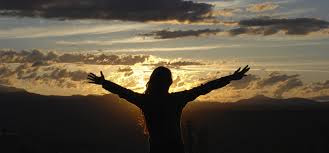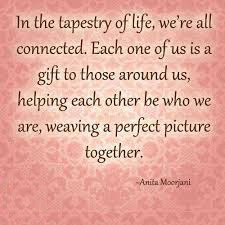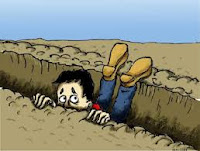As has happened to many of you, Kundalini rising came as a complete surprise for me. In the fall of 2005, while attending a forty-day contemplative retreat in Tucson, Arizona, I suddenly began to experience some bizarre physical, emotional, and spiritual symptoms that were very much out of the ordinary.
After my return home to Canada in early December of that year, my concerned wife searched the internet for these symptoms and came up kundalini rising. Neither of us had ever heard of it. So at age fifty-nine, my life took an unexpected turn as the renovation process of kundalini continued its advance and I began a time of witnessing and exploring this very unusual phenomena. This exploration brought me to the writings of Master Nan Huai-Chin and a tiny piece I would like to share here.
At one point in his book "To Realize Enlightenment, Huai-Chin presents the Hundred Word Inscription, written many centuries before by Lu Ch’un-yang. He refers to it as one of the best essays available combining the three teachings of Buddhism, Taoism and Confucianism. I found this Inscription and his further commentary meaningful as it resonated so closely with my own meditation and kundalini journey.
Hundred Word Inscription
To nurture the vital energy, the ch’i, keep watch without words. To subdue the mind, act without acting. Recognize the patriarch in movement and stillness. There is nothing to be concerned about; who else are you seeking? What’s true and eternal must respond to beings: To respond to being, you must not be deluded. If you are not deluded, real nature remains by itself. When real nature remains, vital energy returns by itself. When vital energy returns, the elixir spontaneously forms. In the vessel the fire (of conditioned awareness) and the water (of primordial awareness) are matched,Yin and yang are born in succession. Universal transformation rolls like thunder. White clouds cover the peak in the morning. Sweet due sprinkles down on Sumeru. Drink for yourself the wine of immortality as you roam free, no one will know. Sit and listen to the tune of the zither without strings: Clearly comprehend the working of creation.
Commentary
- The true meditation work of cultivating the breath, as it moves in and out, watching without words, is the means by which we nurture the vital energy, the ch’i. Let our consciousness follow the breath.
- To subdue the mind, we do not try to stop our thoughts. They are already empty; the mere functioning of the mind, illusions. Thoughts are very numerous, and though we try to keep watch over them, we cannot hold them still. Let them pass by. As we observe them, they disappear. Act without acting.
- Movement and stillness are both unborn. If we do not attach to the movement of thoughts, or fall asleep, we can be the master over both the movement and stillness that enter awareness, and empty them out. Let the “patriarch” observe all that is going on. It is very important to recognize the patriarch in both motion and stillness.
- No need to seek any other method.
- To deal with people and handle situations, you must be able not to go against our fundamental nature.
- We do not have to do any work: mind and energy are joined together, and mind and things have one single source.
- When thoughts have truly been emptied out, vital energy returns by itself.
- The elixir forms by itself. It is something natural, something that is inherently present in our lives.
- The elixir, symbolically like the moon, is a round point within representing the point of perfect, inherently awake, spiritually illuminated, enlightened nature. The vessels represent the body, the transformative functioning of our own energy channels. Through cultivation of the breath, letting go of body awareness, letting go of thoughts, the energy channels spontaneously undergo a transformation. Yin and yang are born in succession.
- With a peal of thunder all the energy channels in our body are open. We move back and forth with the spirit of heaven and earth. We are one body with the universe. At this point, the central channel is really opened.
- White clouds cover the peak in the morning. We are anointed with the light of wisdom. Sumeru means our head. The great bliss chakra on the top of our head opens.
- The tune of the zither without strings stands for entering Samadhi by means of hearing, contemplating and cultivating practice.
~ Adapted from To Realize Enlightenment — Master Nan Huai-Chin
When reflecting on these ancient texts, it’s amazing how they have a way of speaking to our own personal experience of Meditation and Kundalini Rising and its subsequent development. The legitimacy of this Hundred Word Inscription is founded on the fact that it speaks to us, not just intellectually, but also as a confirmation of the spiritual path we are currently following, often not by choice. It legitimizes our own journey, and therefore, can represent a loyal guide for further spiritual development. Consider meditating on this work of wisdom to see if it resonates with your life’s experience as it did with mine.
I am a Christian and have been deeply immersed in it for many years. If read in their proper context, many passages in the Bible, particularly in the New Testament, have a similar effect. To appreciate this, you must go below the literal reading and look for the underlining meaning the writer is expressing. When you do this, the words convey a meaning that is not only understandable, but which can be applied personally to your own journey of faith, thus providing a clear test of its legitimacy — something I generally do not question.
However, I also have to admit that many areas of Christianity, at least the sector in which I am involved, do not meet this test of legitimacy. Although I may understand it, where it originated from, and even why some may choose to believe it, in my mind their legitimacy has not been made real or proven. To be honest, my Christian faith would not change a bit if these things were to disappear suddenly. A lot of these things have to do with dogma and doctrine developed over the centuries and have very little to do with the primary Christian message. Others have to do with traditional practices that have been declared sacred, but, nevertheless, contradict the primary Christian message. Others, as mentioned before, have to do with paying too much attention to the literal word and completely missing the underlying message, thereby turning what might be considered sacred into the imaginary.
Every Christian who has experienced Kundalini Rising faces the tension of being in a community which has declared the very thing that makes that person a more true and loving Christian a heresy.
So that we may all see what is sacred in a new way and without judgement, it is my hope that science will eventually affirm the existence of the subtle body system, the hidden (kundalini) energy system, along with a path to revolutionize and evolve consciousness.
Ah! But even these are thoughts, illusions, to be passed by, emptied out:
"Sweet due sprinkles down on Sumeru.
"Drink for yourself the wine of immortality as you roam free, no one will know."


























